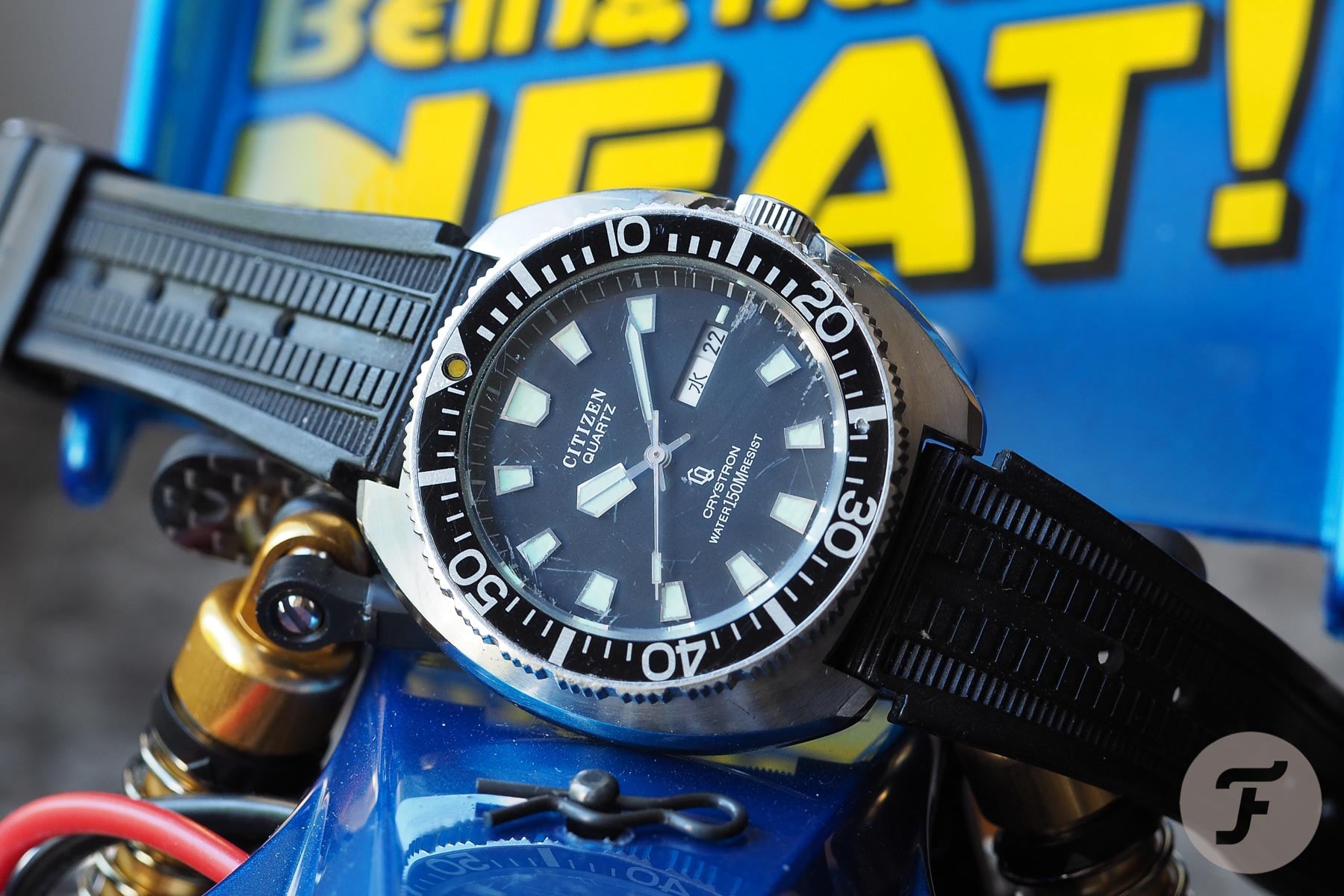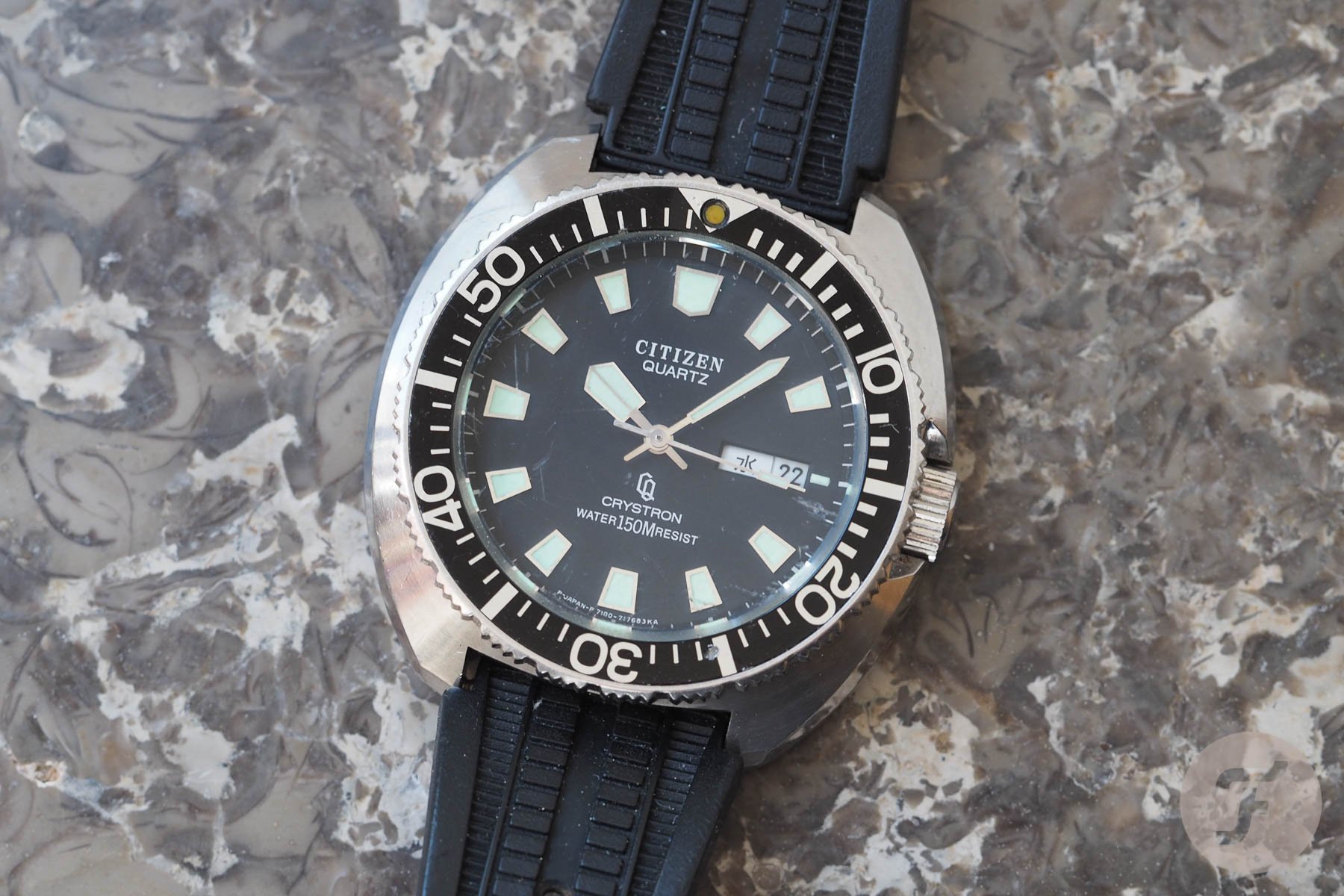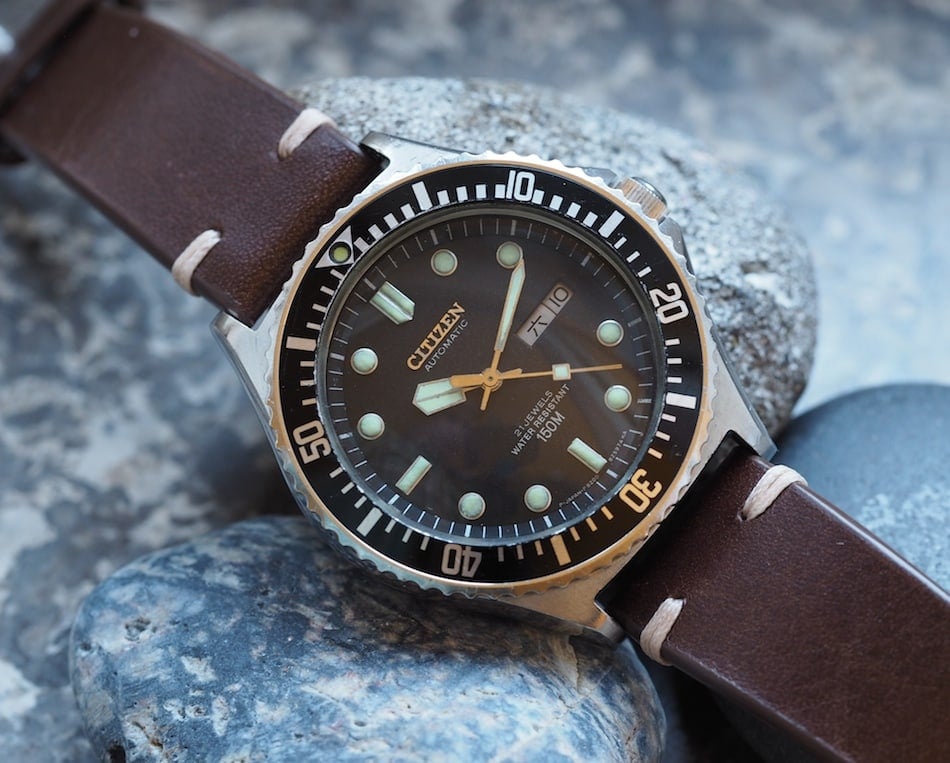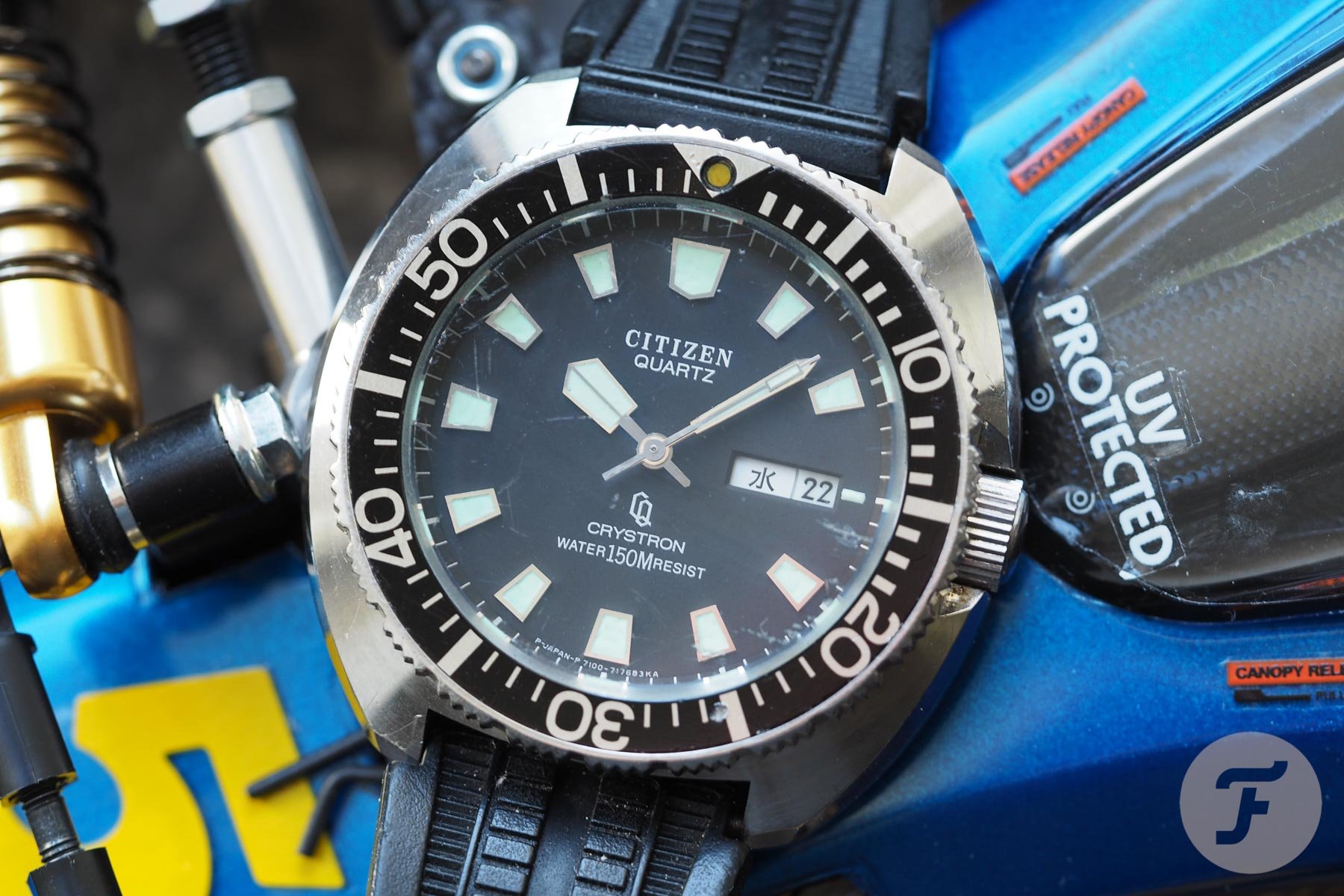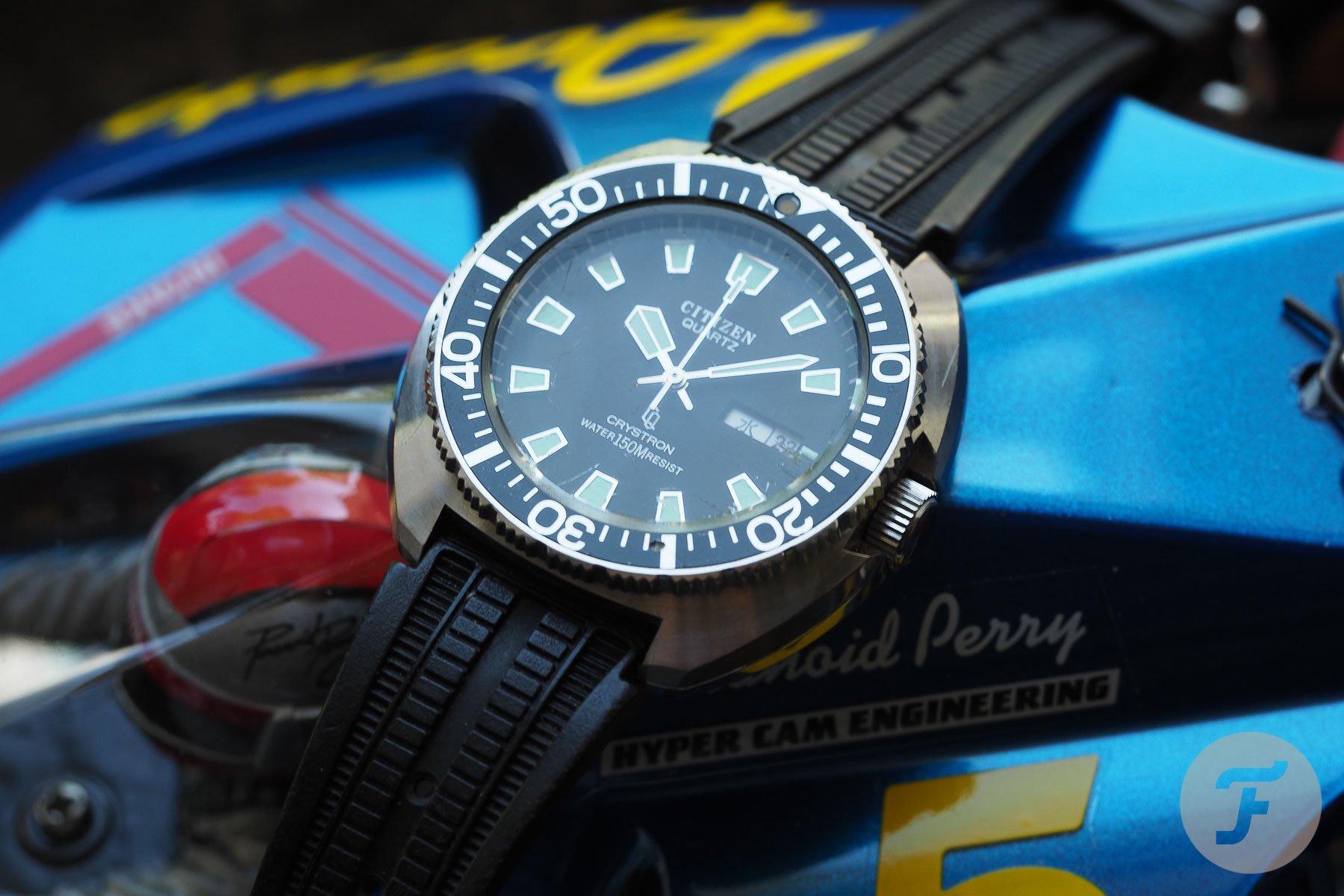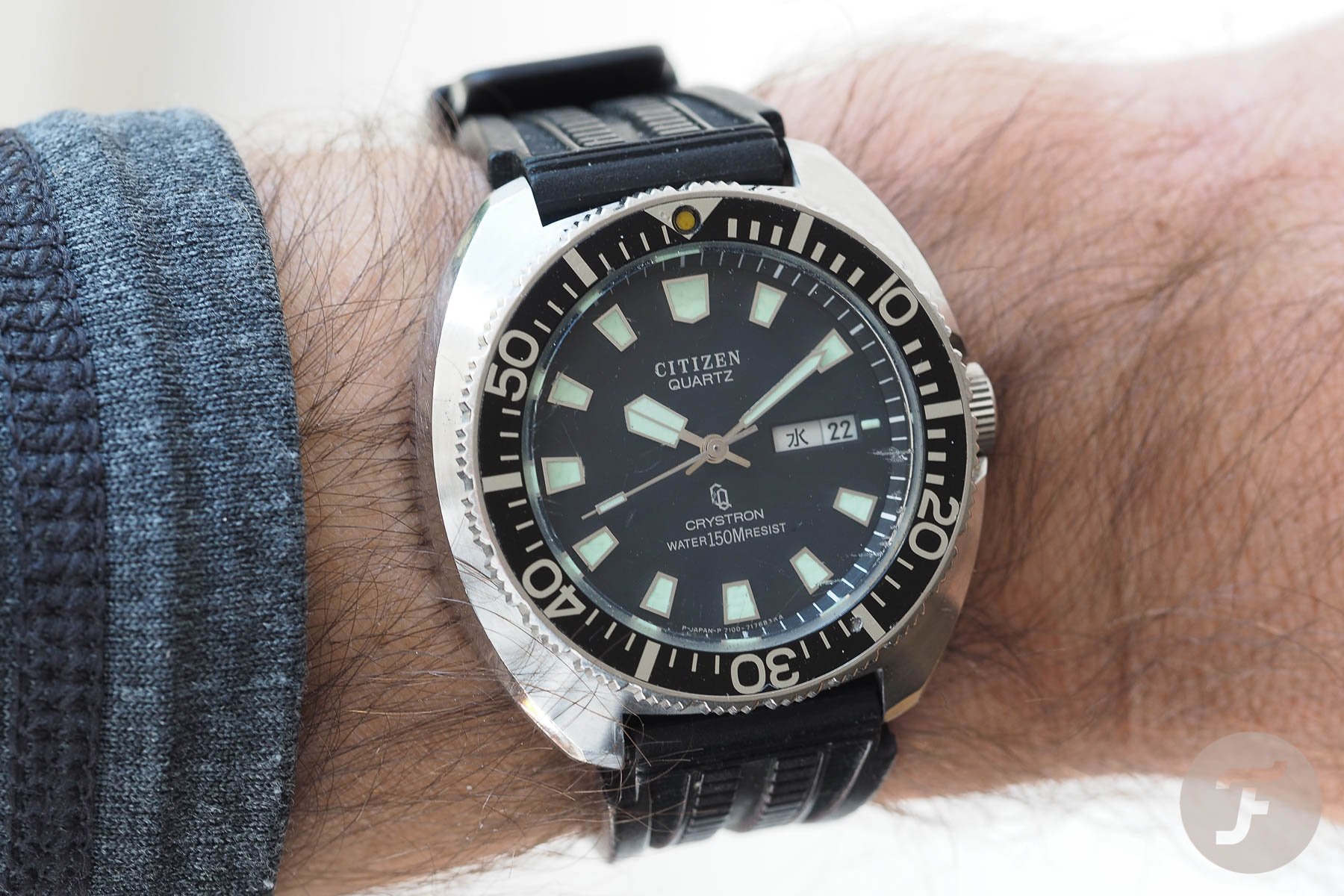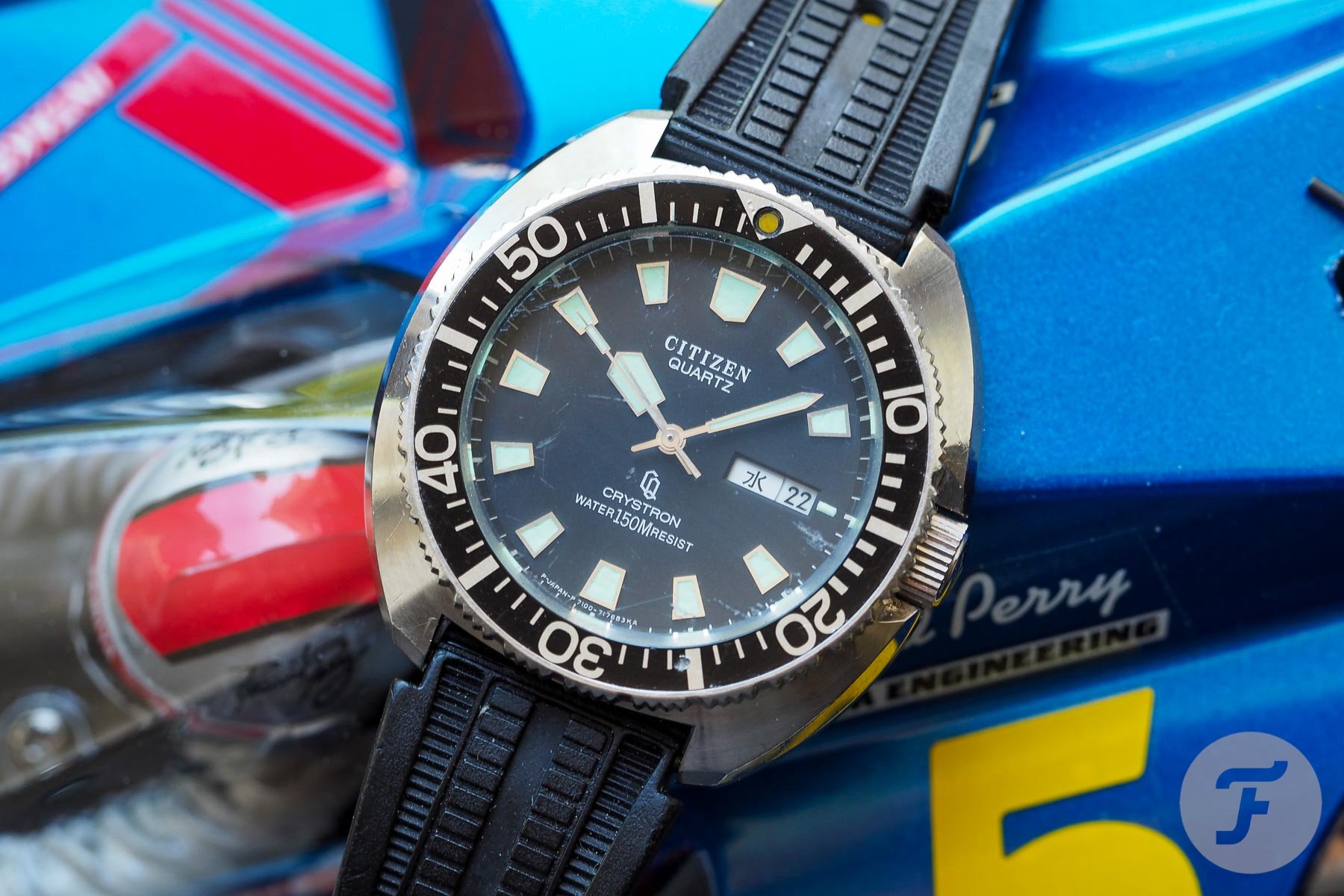#TBT Citizen Crystron Diver
Today, on #TBT we take a look at a Citizen Crystron Diver, a truly satisfying watch that won’t break the bank. In fact, a visit to the bank might not be necessary.
I never tire of highlighting the tit for tat behavior exhibited by Seiko and Citizen. These days, the heavyweight Japanese duo duke it out but it’s less obvious because they’re also battling it out with others. But back in the ’70s and ’80s, things truly went back and forth like an Ali-Frazier bout.
High-beat movements, quartz, and solar exemplify just some of the technologies where the two followed each other in lockstep. In 1973, Citizen debuted its first quartz watch under the Crystron name. This answered Seiko’s earlier Astron. The Crystron name was used well into the next decade across model genres. One such example was the Citizen Crystron Diver.
Quartz Diver History
For someone like myself, it’s hard to believe that 1980 is now 40 years old. To me, this decade still feels relatively modern, but it was still a formative time for quartz watches. They were still viewed as semi-exotic and they were expensive. However, they’d already proven themselves to be exceedingly accurate and reliable. Therefore, it’s no surprise that divers were an obvious application for such a robust style of movement.
We covered the original Seiko Golden Tuna ref. 7549 that debuted in 1978 as the first professional quartz diver. It was an incredibly expensive marvel, but Seiko offered a more achievable 150-meter option with the 7548. We’ve mentioned this watch many times because its case design remains in use on the latest Seiko 5 Sports. Referring back to our quid quo pro comment, Citizen had a lesser-known answer for this in the Crystron Diver.
The Citizen Crystron Diver answered the Seiko 7548
There’s an unfortunate paucity of information about vintage Citizen on the web. In fact, most of what is out there is a compilation of group evidence shared by collectors. Therefore, it’s hard to figure out when today’s model debuted. What I can tell you is this reference (4-732316) dates to 1981 and I’ve seen another from 1980. That puts it right in the same era as the Seiko 7548.
Running Down the Specs
This Citizen Crystron Diver boasts a stainless c-case in 43mm. The length is a comfortable, but not too large 45mm and the thickness comes in at a quartz-appropriate 12mm. Citizen was a bit ahead of Seiko in making the external bezel unidirectional. Even after almost 40 years, the 60-click action is firm without any slop. The knurling is pretty nice as well and exhibits a cool pattern that repeats every three seconds around the circumference. Citizen went with a flat mineral glass as was typical at this time for an affordable dive watch. Mine exhibits some scratches that I can live with. That’s a good thing because replacements are no longer available.
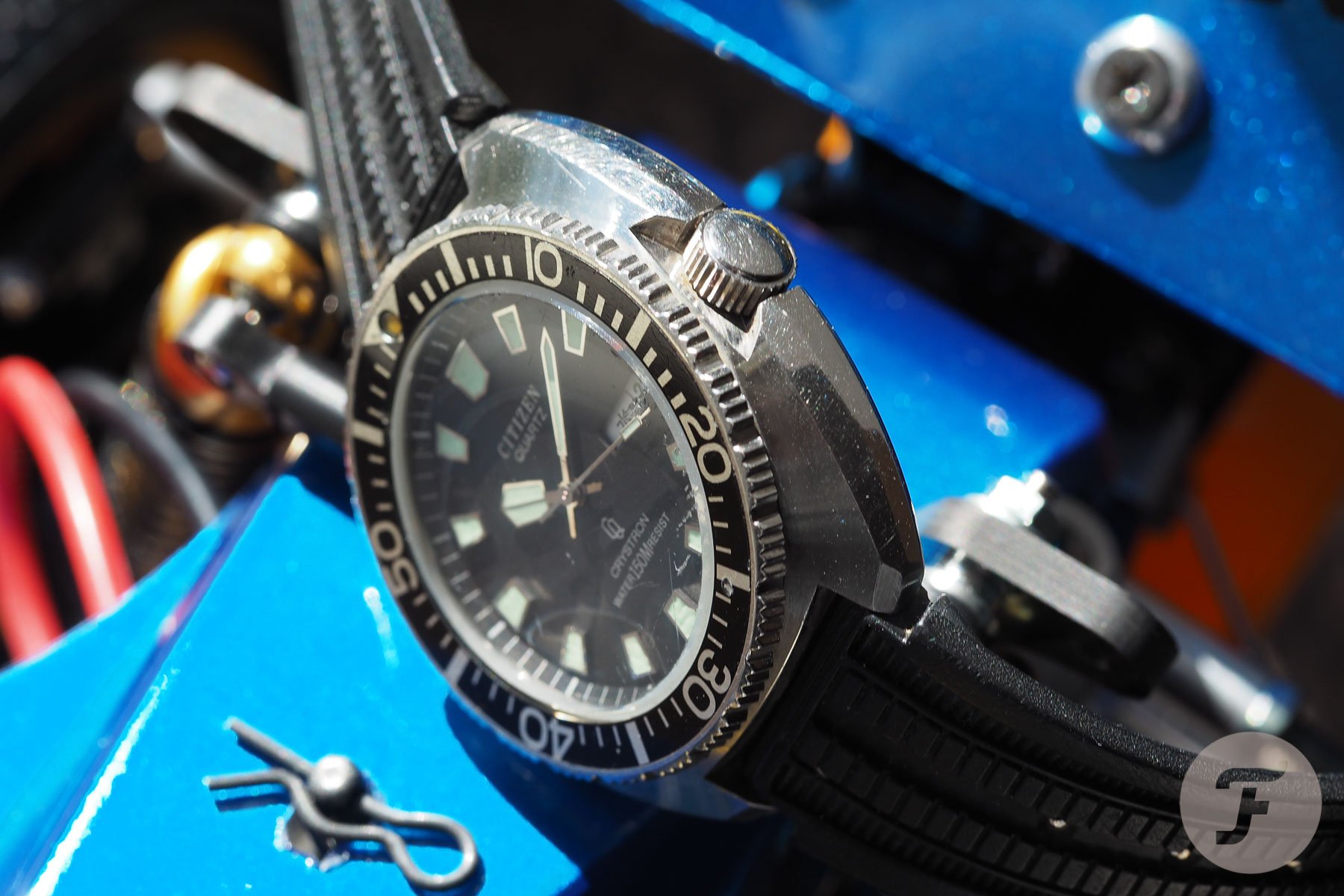
From a water sealing perspective, the 150-meter Crystron Diver uses a solid screw-in (threaded) case back. I’ve not attempted to remove this, but there are reports on various forums stating that Citizen really sealed these things. Also, a well-sized unsigned screw-down crown is nestled between some awfully cool integrated crown guards. Those crown guards represent one of the few exercises in whimsy on what is primarily a brass tacks dive watch. Inside, the watch is powered by the 5-jewel caliber 7302A quartz movement. This movement debuted in the 70s and is known to be robust.
Familiar Design Cues
If you’re a fan of Citizen dive watches, the Crystron Diver brings in a design trait shared with its mechanical counterparts. The spade-shaped hour hand and seconds hand with rectangular pip are familiar. The 51-2273 shown above proves this. As an aside, Citizen produced a Crystron counterpart to the 51-2273 with a nearly identical case at the same time as my c-cased specimen. Advertisements tell us that the Crystron retailed for more than double the price of the mechanical variant at somewhere around ¥45,000!
Returning to the dial on the Crystron Diver, I am a huge fan of the design. I think that the hands are absolutely unique and I wish Citizen had used them in lieu of the Mercedes type and whatever they’re using currently. How often does a watch brand actually create something truly memorable? The rest of the dial shows some nice clean design. The applied indexes are legible and the day/date window isn’t bothersome. You’ll note the Japanese kanji and that’s because this was apparently a JDM-only piece. Finally, the bold bezel insert pairs well and looks a little different than other Citizen divers.
Other Random Thoughts
When I found this Crystron Diver in Japan, I didn’t think much of the rubber strap. It turns out that this 20mm strap was basically Citizens answer to Seiko. For a watch dating to 1981, the rubber feels a lot more like Seiko straps from the late 1960s. If you know the waffle type, then you get my gist. It’s firm, but somehow very comfortable on the wrist. The rudimentary formed wire pin buckle also adds to the overall vintage character of this cool piece.
I know there are many of you out there who aren’t interested in quartz watches. I kind of get that. What I don’t get is the blind dismissal of a well-made quartz tool watch that was truly something special when it was first produced. The Crystron Diver falls into that category. When in hand, it feels heavy, solid, and as good as vintage divers costing many times more. I’ve been spending some serious time with my Synchron-era Doxa SUB 300 Sharkhunter and I really like that watch. Today’s Citizen boasts a similar shape and I don’t think it gives up anything in terms of quality. It also costs a hell of a lot less to acquire.
…you can score one of these for $150 – 300 depending on condition and bidder interest
The reference 4-732316 Crystron Diver doesn’t show up often outside of Japan. Still, if you’re patient or feel like cruising some well-known Japanese marketplaces, you can score one of these for $150-300 depending on condition and bidder interest. No matter the powertrain, I can’t help but call that a smashing deal. This watch looks fantastic on the wrist, can pair well with any number of straps, and it runs fuss-free. Really, who can moan about that?
Hopefully, today’s article on the Citizen Crystron Diver gives you a worthy and affordable alternative to the Seiko 7548. I also think there are plenty of folks out there — perhaps even more during the time of publishing — who desire a credible vintage diver without going into debt. I think this watch scores on both accounts.


